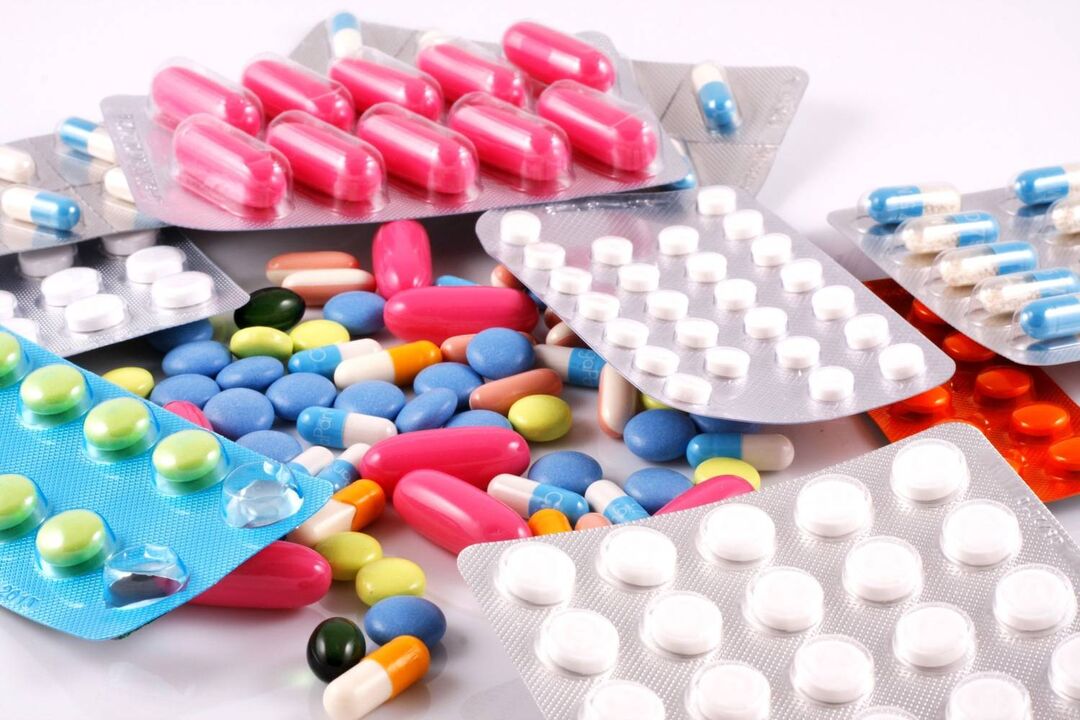The initial stages of prostatitis are characterized by mild symptoms. Patients often feel mild pain in the groin, perineum, or lower back. With the development of the disease, the pain syndrome gradually increases and intensifies.

With this disease, acute cramps are noted, in which there is a violation of the process of urination, and the feeling of wanting it becomes frequent and irrational. When you observe symptoms of prostatitis in yourself, it is necessary to see a specialist as soon as possible. For each patient, the urologist appoints an individual course of treatment, however, as a rule, it is based on taking drugs.
Effective medicine to treat prostatitis
Antibacterial therapy
Antibiotics are the doctor's first choice for treating this disease. Antibacterial drugs are prescribed depending on the causative agent, which is determined by a special diagnostic procedure - bacterial culture. With severe pain syndromes, antibacterial drugs can be given intravenously to the patient. Usually the course of antibiotic treatment is 4 to 6 weeks.
alpha blockers
Preparations from this group are suitable for men with urinary disorders. Alpha blockers relax the muscles of the prostate and bladder, making it easier to urinate.
The course of treatment with such drugs is at least six months. The course must be completed rigorously to the end, even if the patient's health has improved previously.
Analgesic
This class of drugs makes the lives of many patients easier. However, their dosage should be clarified with your doctor.
soft
The fact is that due to a violation of the quality of daily life and sex, many men fall into a state of depression, which the attending physician can use sedatives to treat. In this case, the urologist needs to carefully monitor the mental state of the patient. Mostly men are prescribed valerian. In severe cases, men may need the help of an experienced psychologist.
Endocrine drugs
This group of drugs is aimed at reducing the level of the male hormone - testosterone, which promotes the growth of prostate tissue. When taking these drugs, a man's general hormonal background stabilizes and the symptoms of prostatitis decrease.
Phytotherapy
These are groups of drugs derived from natural herbs. The spectrum of action of these drugs is very diverse and largely depends on the doctor's prescription. As a rule, phytoprep preparations are taken in combination with the main method of treatment, this greatly facilitates the development of the disease, relieves acute symptoms and inflammation.
vitamin
Taking vitamins is necessary to strengthen the body's immune system, which is greatly affected by prostatitis. The chronic course of the disease greatly affects the protective functions of a person, so vitamins are taken in combination with main drug therapy.
Drug options for each stage of prostatitis
For acute bacteria
The cause of this disease is bacteria of the Escherichia coli group. Occasionally, staphylococci, chlamydia, streptococci, and anaerobes can be seen in prostatic secretions. In this case, taking antibacterial drugs is a key point in the treatment process. As a rule, drugs from the fluoroquinolone group are prescribed. Patients who are at risk of genital bacterial infection should also be treated against chlamydia.
With a chronic form of bacteria
The effectiveness of antibiotic therapy in this form of prostatitis is significantly reduced. This is because many pellets are not able to penetrate the prostate epithelium during its inflammatory process. As a rule, the cause of the chronic bacterial form of the disease is chlamydia, ureaplasma and mycoplasma bacteria. They usually heal within a few weeks.
Against non-bacterial form
Experts have found that after taking antibiotics, the signs of pain syndrome gradually decrease. Therefore, doctors prescribe a course of antibacterial drugs to patients, even if no infection is detected at the time of diagnosis.
If the disease is resistant to treatment, then the patient is prescribed an alpha blocker, a drug that fights the main cause of non-bacterial prostatitis - urine backflow into the prostate duct.



























